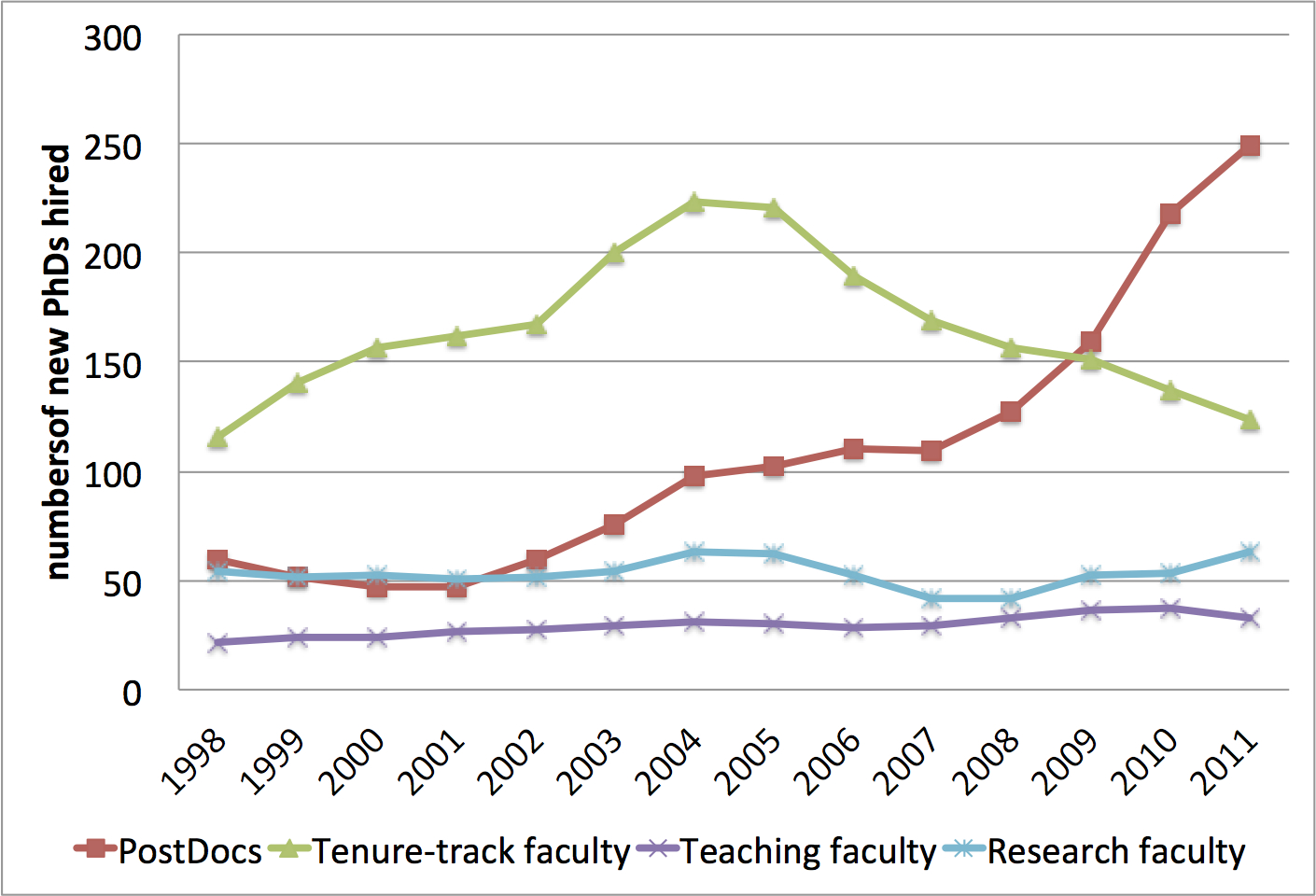 The recent surge in the number of new Ph.D.s in computer science and allied fields pursuing postdoctoral positions has continued in the past year, according to the latest data from the Computing Research Association’s (CRA) annual Taulbee survey being published this month — warranting renewed attention to CRA’s efforts to engage the community in a conversation about this trend (more following the link).
The recent surge in the number of new Ph.D.s in computer science and allied fields pursuing postdoctoral positions has continued in the past year, according to the latest data from the Computing Research Association’s (CRA) annual Taulbee survey being published this month — warranting renewed attention to CRA’s efforts to engage the community in a conversation about this trend (more following the link).
Background
As we’ve covered extensively in this space, CRA — the umbrella organization of the Computing Community Consortium (CCC) — published a white paper in February 2011 documenting statistics about academic and industry hiring, and articulating relevant issues about postdocs. Following discussions within departments, CRA released a consensus paper this spring — a statement by the community to all those concerned about the increasing numbers of postdoctoral positions in the field. The consensus paper provides guidelines on when a postdoctoral position is a positive experience, and specifies expectations for postdocs, their mentors, and their host departments and organizations.
New survey results
Now, based on this year’s Taulbee survey data, the three-year rolling average for the number of new computing Ph.D.s pursuing postdoctoral positions rose from 218 in 2010 to 249 in 2011 — an increase of 14%. Meanwhile, the rolling average for the number of new Ph.D.s hired into tenure-track faculty positions immediately following graduation declined for the seventh consecutive year, dropping from 131 in 2010 to 124 in 2011, or about -5%.
It’s worth noting that the raw data do show a decrease in postdocs between 2010 and 2011 — from 294 to 241 — constituting the first such drop since 2004-05. However, responses to the Taulbee survey vary from year to year (we have used three-year rolling averages to cancel out such noise), and the raw numbers are still significantly higher than in the early 2000s, when the field had fewer than 100 new Ph.D.s pursuing postdoctoral positions in a given year.
Here’s a graph displaying the hiring of new computer science (and allied) Ph.D.s from U.S. and Canadian universities between 1998 and 2011, as three-year rolling averages:
(The “other” category above is an aggregate of several different reported types of positions, including government positions, self-employment, unemployment, and unknown positions.)
Looking closely at just the academic positions, it’s clear the new postdocs and tenure-track faculty have been most affected in recent years:
(For comparison purposes, these graphs are updates to Figures 1 and 2 in the original white paper — and to two figures posted on this Blog last May.)
Your thoughts
What do you think about these trends? Take a few minutes to discuss the CRA consensus paper and these new data with your colleagues — and please post your thoughts in the space below.
And to learn more about this issue, check out our previous coverage, as well as a recent IEEE-USA article summarizing CRA’s effort to facilitate a community-wide conversation about the recent surge in postdoctoral positions in computer science and allied fields.
(Contributed by Erwin Gianchandani, CCC Director, and Member, CRA’s Committee on the Status of Postdocs in Computing)












Trackbacks /
Pingbacks